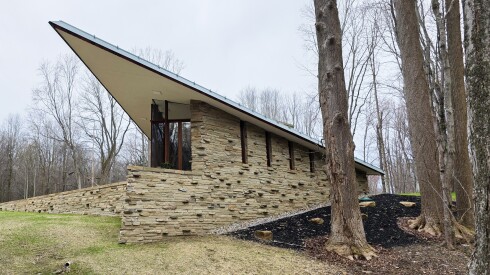With the Spanish conquest of the Aztec empire, Iberian overlords set about imposing their customs on the subdued populace, eliminating traces of pre-Hispanic religions they deemed heretical by demolishing major temples and building churches and other structures atop their ruins. Centuries later, in 1978, workers laying electrical lines happened upon the remains of the Templo Mayor, the Aztecs’ most important ceremonial center (and, yes, the location of their notorious human sacrifices). Subsequent excavations have revealed superimposed pyramid foundations and priceless artworks, many now displayed at the on-site museum. Thrillingly, treasures keep turning up—including the spring 2017 discovery of a stone box containing some of the finest Aztec gold ever found, just off the Templo Mayor’s steps.
More Recommendations
The Templo Mayor
With the Spanish conquest of the Aztec empire, Iberian overlords set about imposing their customs on the subdued populace, eliminating traces of pre-Hispanic religions they deemed heretical by demolishing major temples and building churches and other structures atop their ruins. Centuries later, in 1978, workers laying electrical lines happened upon the remains of the Templo Mayor, the Aztecs’ most important ceremonial center (and, yes, the location of their notorious human sacrifices). Subsequent excavations have revealed superimposed pyramid foundations and priceless artworks, many now displayed at the on-site museum. Thrillingly, treasures keep turning up—including the spring 2017 discovery of a stone box containing some of the finest Aztec gold ever found, just off the Templo Mayor’s steps.
Archaeological Site in the Center of the City
Archaeologists visiting Mexico City must have a hard time resisting the urge to poke a trowel in the earth here– it’s one big archaeological site. After the Spanish destroyed the Aztec city of Tenochitlan in the 16th century, most of the Aztec structures were razed; whatever remained was buried or built upon anew. Stories of the discoveries of Aztec sites in Mexico City are often epic, and the story of the Templo Mayor’s uncovering is the most epic of all. The Templo Mayor is one of the most important archaeological sites of the Aztecs in Tenochitlan, modern-day Mexico City. Constructed in the 14th century, it wasn’t until 1978 that the site was discovered anew–this time by electrical workers who, while digging, struck a massive stone weighing over eight tons. Their work stopped and archaeological work commenced. Today, it continues; Templo Mayor is an active archaeological site where you can watch digging in person. If you want to learn more about the ancient city’s history, visit the on-site museum.
Aztec in the City
When you have fantastic ancient Aztec ruins located smack-dab in the middle of the city, you have no excuse but to go see them. So, if you’re visiting Mexico City, you have to go to Templo Mayor. Templo Mayor was one of the main temples of the Aztecs and the archaeological site is located just to the northeast of the zócalo or main plaza of Mexico City, on the corner of Seminario and Justo Sierra streets. Templo Mayor is a relatively small site, and there is a pathway that guides you around it. Placards along the way explain what you are seeing. It will take you between a half-hour and an hour to walk through the site. After that, be sure to head to the museum, which is adjacent. For me, the Templo Mayor Museum was the more interesting of the two places. All of the artifacts, in the museum, were recovered from the site and they are just stunning. The museum is small but well laid out in eight exhibition halls with items well described. As you enter, you’ll be greeted by two enormous, and I mean mammoth, stone reliefs including one that depicts Tlaltecuhtli (shown in the photo), the Earth Goddess from Aztec mythology. In stone, she weighs 12 tons! If you have absolutely no knowledge of anything Aztec, you’ll learn a lot just visiting this one museum! Templo Mayor is located just a block from the Zócalo subway station. There is an entry fee and you will have to check in your bags. Photography (no flash) is allowed.
New findings of Teotihuacán
The Museum at Templo Mayor, the ancient Aztec temple that lies just behind the Cathedral, has opened a new exhibit that features the most recent discoveries at Teotihuacán. The exhibition is called “Teotihuacán. Tres pirámides en el paisaje ritual”, and it will be in the museum until February. It features impressive funeral masks, ancient figures, knives, and many more objects found recently near the Sun and Moon pyramids.
Aztec Temple in the Middle of Mexico City
The Templo Mayor was one of the main temples of the Aztecs in their capital city of Tenochtitlan, which is now Mexico City. The temple was rebuilt six times, with the first temple constructed in the 1300’s. The site includes a museum displaying many of the artifacts discovered when the temple was excavated. Colombia & Mexico City trip report: http://bit.ly/1ebCLgc























